Save A Life: Give Blood
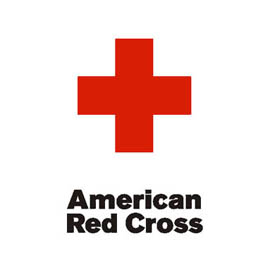
"The need is constant. The gratification is instant. Give blood." Says the American Red Cross. That statement couldn't be more true. Each and every day many people are in need of blood. How will they be able to receive that blood if it weren't for the thousands upon thousands of donors? Read on to find out how, where, and when to give blood, what to do on your first donation, and what types of blood there are. Save a life: Give blood!
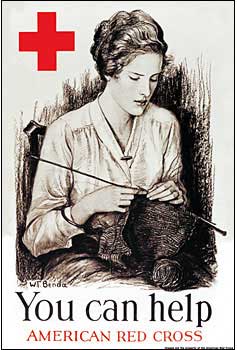
The History Of The Blood Transfusion
Blood transfusions go a long way back. It's because of the refining and testing that blood transfusions are as safe and effective as they are today. This is a timeline, not including absolutely everything, about the major and important discoveries and tests done with blood. See where transfusions began to understand how they've become what they are today.
- 1628 - The first known blood transfusion is attempted soon after British physician William Harvey discovers the circulation of blood.
- 1658 - Microscopist Jan Swammerdam observes red blood cells.
- 1665 - The first recorded successful blood transfusion is done in England. The blood was transfused by physician Richard Lower to his dog.
- 1667 - Blood is successfully transfused from sheep to humans by Jean Baptiste Denis, Richard Lower, and Edmund King.
- 1901 - The first 3 blood groups are discovered by an Austrian physician, Karl Landsteiner.
- 1907 - The first blood transfusion using blood typing and cross matching (discovered by Ludvig Hektoen) is accomplished by Reuben Ottenberg.
- 1914 - Longer preservation is now made possible due to the discovery of anticoagulants, such as sodium citrate.
- 1939-40 - The Rh system (+, -) is now discovered by 4 men: Karl Landsteiner, Alexander Wiener, Philip Levine, and R. E. Stetson.
- 1940 - The U.S. now has a national blood collection agency.
- Plasma can now be broken down thanks to Edwin Cohn.
- The Red Cross can use (and still does today) a new vaccuum bottle designed by
John Elliott. - 1941 - The Red Cross, with Dr. Charles R. Drew appointed as medic, establishes a National Blood Donor Service and starts treating soldiers in Pearl Harbor for shock using albumin.
- 1944 - The soldiers are treated with dried plasma during WWII.
- 1945 - No more blood is collected for the soldiers after the Red Cross has collected more than 13 million pints, while Coombs, Mourant, and Race identify incomplete antibodies which is dubbed "The Coombs Test" or the "Anti-globulin Test."
- 1947 - Syphilis and ABO testing is performed on blood.
- 1971 - The blood is now being tested for Hepatitis B.
- 1983 - Red Cells can now be stored for up to 42 days thanks to additives to preserve the life of them, while warnings are sent out from the U.S. Blood Banking Groups about Acquired Immune Deficiency Syndrome (AIDS).
- 1985 - Red Cross starts testing blood for HIV.
- 1992 - The Red Cross now starts testing for HIV-1 or HIV-2 antibodies in the blood.

How Do I Go About Giving?
If you've decided to make a life saving choice of giving blood, there are many options to choose from to decide when and where you want to go. You need to determine where you want to go, when that location is having a blood drive, and if you want to make an appointment or not. Here's a list of them:
- Go online. The American Red Cross (www.redcross.org) is a great tool for scheduling an appointment for giving blood. You need to make an account, and then you are ready to search for blood donation locations. After making an account, simply click on the "make a blood donation appointment" box. They will ask you your zip code, how far you want to travel, and the dates of which you're looking to give blood. Enter that information and you'll be sent to a screen full of donation locations and times. Choose one, and schedule yourself an appointment!
- Join the mailing list. After making your first donation, you are on the mailing list. The Red Cross will send you papers in the mail telling you when and where blood drives are that are close to you.
- Call the Red Cross. By dialing 1-800-Red-Cross, you will be able to talk to a representative who can tell you when and where blood drives are near you. They can also make you an appointment!
- Look for Ads and Fliers. Fliers are usually placed in public places when a blood drive is going on near you or in your community. Take notice to the community boards in your local businesses for times and places of local blood drives. The newspapers also put in information about blood drives if you look for it!
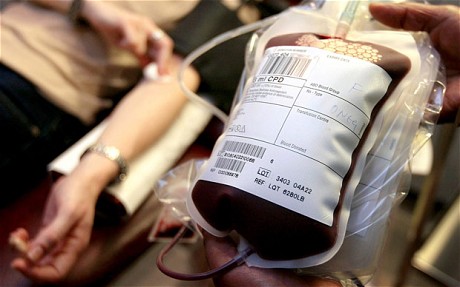
What To Expect The First Time Giving
The first time you give can be pretty scary. Will I pass out? Will it hurt? How long will it take? These are all normal questions for a first time donor. My advice to you? Relax! I have given blood many times and yes I have passed out, the needle does not hurt when inserted correctly, and no it doesn't really take that long (about 5-15 minutes depending on your body). Here's what will happen:
- You will arrive and a greeter will take your drivers license and give you a folder. They will also give you reading material to read through to learn if you can give blood.
- After reading the material and returning it, someone will come get you and take you to the side with a computer and a fancy little machine that reads your iron.
- They will verify your information, ask your weight, and take your temperature and blood pressure.
- If your physical health is fine, they will continue with a finger prick to determine your iron level in your blood.
- They prick your finger (and in my opinion this hurts the most!), take a blood sample and put it in their fancy machine that reads your iron level.
- If your iron level is or above, you can donate blood. If it's lower, they will recheck it to make sure and if it's still too low, they will send you home.
- Once you receive a confirmation that you can give blood, they will set you up in front of a computer to answer a set of questions. Be sure to answer them honestly!
- Once finished, with your questions, you will now wait for an available table.
- After a table has become available, they will have you lie down, put a strap around your arm, and give you something in your hand to squeeze (like a piece of wood or plastic).
- The will clean the needle site, tape the tubes on your arms, and put the needle into your arm, drawing the blood.
- Everybody gives at a different rate, but it usually lasts 5-15 minutes. Once you're done, they will come and fill a few small tubes that are sent away to be tested for disease and other things.
- They will remove the needle, give you a cotton ball to hold over the needle site, and have you hold your arm straight into the air.
- Then, they bandage the needle site, ask if you're OK to sit up, and then escort you over to the canteen.
- They provide you with drinks and food to enjoy, and then when you're ready you are free to leave! Most times you can also schedule another appointment when you are there to save you some of your own time
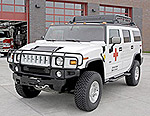
The Journey Blood Makes
The journey that blood makes before it gets to the patient could be a rather long one. It starts when you donate and ends when a recipient received it, but what happens in between?
- The blood is extracted from you, given your whole blood number which identifies the blood as yours, is bagged, and taken from the donation site.
- The blood is scanned into a computer database and spun in a centrifuge to separate the transfusable parts; the red blood cells, platelets, and plasma.
- Those three parts are then broken down into even finer parts to become transfusable.
- Those test tubes that you filled at the end of your donation? They are now sent out for testing and received by 1 of the 5 Red Cross National Testing Labs.
- At the lab, they perform a dozen tests on your blood to check for diseases and other things. If something is found, they throw away the donated blood, and notify the donor immediately.
- When the "good" blood is processed, they take the blood and put it into a storage facility to be used in the future.
- The red blood cells are stored at 6 degrees Celsius, for up to 42 days, the platelets are stored at room temperature in agitators for up to 5 days, and the plasma is frozen and can be frozen for up to 1 year.
- The blood is now available to be distributed to whomever may need it.
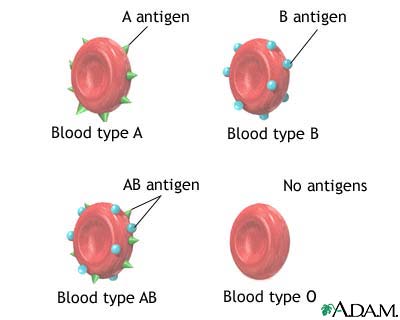
Different Types of Blood
Now that you know how to give blood, what happens at the donation site, and the journey blood makes, let me explain to you the different types of blood that are donated. Each person has a specific type of blood, and that blood can only be donated to certain types of blood. There are 4 types: A, B, AB, & O. Let's look at them more closely.
Type A
Type A means that the blood has only the "A Antigen" on red blood cells and the "B" Antibody in the plasma. Type A donors can give to people with Type A or Type AB bloods only.
Type B
Type B means that the blood has only the "B Antigen" on the red blood cells and the "A" Antibody in the plasma. Type B donors can give to people with Type B or AB bloods only.
Type AB
Type AB means that the blood has both the "A & B Antigen" on the red blood cells and neither the "A or B" Antibody in the plasma. Type AB donors can give to people with AB blood, but can receive any other type of blood; A, B, or O.
Type O
Type O means that the blood has neither the "A nor B Antigen" on the red blood cells, but both the "A and B" Antibody in the plasma. Type O is considered the Universal Donor and is greatly needed. Type O donors can donate to any other blood type; A, B, AB, or O.
Along with the the Types of blood, there's and Rh factor that is thrown into the mix. This determines whether your blood is positive/present (+) or negative/absent (-). As a general rule, Rh (-) blood is given to people that are Rh(-), and Rh (+) is given to people that are Rh(+) or Rh (-).
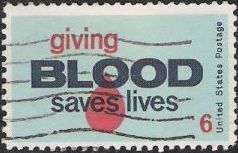
Blood Facts & Stats
There are many facts and statistics about blood that people don't know. Be amazed when you read these interesting facts about blood!
- The universal red cell donor is Type O (-)
- The universal plasma donor is Type AB (+)
- Some blood donation sites offer Double Red Blood Cell Donations
- O (+) is the most common type of blood
- Every 2 seconds, someone in the U.S. needs blood
- More than 38,000 blood donations are needed everyday
- The blood type most requested by hospitals is Type O
- A single car accident victim can need up to 100 pints of blood.
- The number of blood donations in the U.S. in 1 year is 9.5 million
- The average adult has about 10 pints of blood in their body. You donate 1 pint when giving
- One donation can help save the lives of up to 3 people
- If you begin donating blood at the age of 17 (the first eligible age in the U.S.) and donate every 56 days until you are 76, you would have donated 48 gallons of blood which is enough to save up to 1,000 lives!
- Only 7% of donors have Type O (-) blood
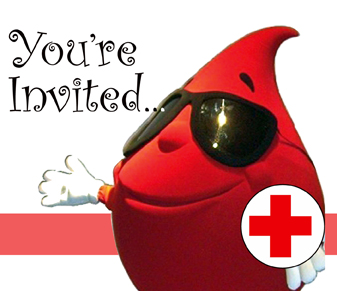
Now that you have all the facts and information about donating blood, get on the phone or computer and make your appointment! There's nothing holding you back but yourself. So go ahead, save a life. Give Blood!





